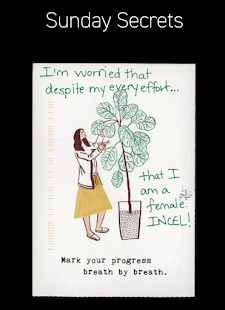Kinetic and Interactive Poetry - Abby T.
Kinetic and interactive poetry, because of its digital-born nature, is perhaps uniquely suited to the creation of metaphors. In Electronic Literature, Scott Rettberg quotes Chris Funkhouser, who argues that a poem is electronic “‘...if computer programming or processes (software, etc.) are distinctively used in the composition, generation, or presentation of the text’” (118). This of course opens up a wide range of possibilities for the medium of metaphor and how it may affect the meaning of the piece. Ingrid Ankerson and Megan Sapnar’s Cruising, for instance, utilizes animation to immerse the reader in the text, with the limited degree of user control and the passing of the text across the page encouraging comparisons to driving (Electronic Literature Collection). ii in the white darkness by Reiner Strasser and M.D. Coverley, while also making use of animation, is also notable for its use of sound. The muffled aural landscape, which appears and disappears with the click of the mouse, greatly contributes to the overall feeling of transience that emanates throughout the piece. Fascinatingly, these two examples, as well as all kinetic and interactive poetry to some extent, can be connected to the relevant literary and artistic traditions named by Rettberg. Sound poetry and moving letters in film seem particularly relevant to the metaphors I explored.
NeoNio by Jim Andrews (vispo.com)
Jim Andrews’ NeoNio is most obviously influenced by sound poetry. In it, the user layers and sequences sounds and their accompanying animations in order to make a comprehensive piece. Rettberg writes that, “Though no representational language results from the process, the work produces a highly interactive aesthetic experience... that pulls directly from avant-garde literary tradition while challenging conventional definitions of poetry” (137-138). I am inclined to agree with this opinion. While at first glance NeoNio seemed to be a kind of music software, I found that the animations added an almost literary aspect to the piece. Most of them were letters arranged and presented in a way which emphasized the music; a “NA” symbol, for instance, would appear on the screen when a “na” is sung. The very act of arranging these letters and sounds mirrors the aural aspects of poetry writing, while the animations themselves give the work an artistic flair and further adds to its zany energy. This raises the question of what exactly poetry is; if NeoNio counts as poetry, then music must as well.


I truly love that you described kinetic and interactive poetry as, "perhaps uniquely suited to the creation of metaphors." That is such a beautiful way to put it and also very accurate. I was also fascinated by your depiction of ii in the white darkness. I can't agree more with this sentence, "The muffled aural landscape, which appears and disappears with the click of the mouse, greatly contributes to the overall feeling of transience that emanates throughout the piece." Your words are so lovely and I am sure Reiner Strasser would be so flattered!
ReplyDelete